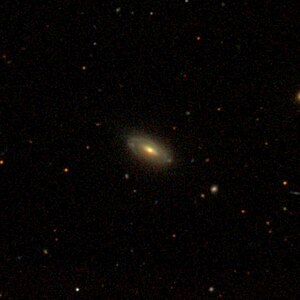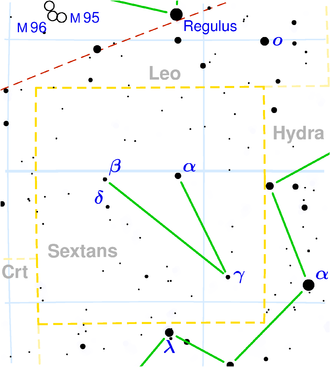NGC 3062
| Galaxy NGC 3062 |
|
|---|---|

|
|
| SDSS recording | |
| AladinLite | |
| Constellation | sextant |
|
Position equinox : J2000.0 , epoch : J2000.0 |
|
| Right ascension | 09 h 56 m 35.8 s |
| declination | + 01 ° 25 ′ 43 ″ |
| Appearance | |
| Morphological type | Sb |
| Brightness (visual) | 14.4 mag |
| Brightness (B-band) | 15.2 mag |
| Angular expansion | 0.6 ′ × 0.3 ′ |
| Position angle | 65 ° |
| Surface brightness | 12.4 mag / arcmin² |
| Physical data | |
| Redshift | 0.027556 ± 0.000084 |
| Radial velocity | 8261 ± 25 km / s |
|
Stroke distance v rad / H 0 |
(363 ± 25) x 10 6 ly (111.2 ± 7.8) Mpc |
| history | |
| discovery | Albert Marth |
| Discovery date | April 30, 1864 |
| Catalog names | |
| NGC 3062 • PGC 28699 • CGCG 008-002 • IRAS F09539 + 0139 • 2MASX J09563578 + 0125425 • GALEX ASC J095635.83 + 012543.4 | |
NGC 3062 is a spiral galaxy with extensive star formation regions of the Hubble type Sb in the constellation Sextant south of the ecliptic . It is an estimated 363 million light years from the Milky Way and about 65,000 light years in diameter.
In the same area of the sky is u. a. the galaxy NGC 3044 .
The object was discovered by Albert Marth on April 30, 1864 .
